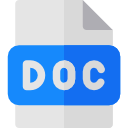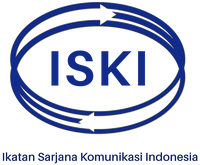Informasi Kesehatan di Media Online
DOI:
https://doi.org/10.31315/jik.v13i3.1460Keywords:
Informasi Kesehatan, Media Online, Netizen, Kredibilitas, InteraktifAbstract
Orang-orang terikat mencari informasi kesehatan melalui internet yang dapat diakses setiap orang melalui teknologi informasi seperti smartphone. Mereka akan mencari informasi kesehatan sebagai kepedulian terhadap kesehatannya. Tujuan penelitian ini adalah menganalisis media mainstream digital sebagai sumber informasi yang digunakan untuk kepentingan kesehatan. Pertama, seberapa dalam pengguna memahami media digital untuk memenuhi kebutuhan informasi kesehatannya. Kedua, secara framework dipakai untuk memahami sebagai aktivitas komunikasi dalam memaanfaatkan media online. Wawancara semi terstruktur dilakukan untuk mendapatkan informasi yang memadai. Hasilnyamenunjukkanbahwafaktorkognitifyanglebihsignifikanuntukmenggmbarkanaktivitaskomunikasi dalam mencari informasi kesehatan. Bentuk informasi kesehatan yang dipersepsikan netizen merupakan hal yang urgen. Sementara media online yang kredibel manakala netizen dalam mencari informasi kesehatan dapat dilakukan dengan cepat dan akurat.References
Afifuddin & Saebani, Beni Ahmad. (2009). Metodologi Penelitian. Kualitatif, Bandung: Pustaka Setia.
Aldhous, P News/Feature Editor. (2001). Nature, San Fransisco, CA.
Allison S. Editor Consultant. (2000). Discovery Health and Former, Editorial director AOL Health, the University of Maryland, College Park, Md.
Strauss, Anselm & Corbin, Juliet. (2003). Dasar-Dasar Penelitian Kualitatif, Tata Langkah dan Teknik-teknik Teoritisasi Data, Yogyakarta: Pustaka Pelajar.
Doherty, J. Executive Producer. (2000). Washingtonpost.com, Arlington, VA.
Effendi, Onong Uchjana. (1993). Ilmu, Teori & filsafat Komunikasi, Bandung: Citra Aditya Bakti.
Eve-Marie Lcroid. (2000). MEDLINEplus, Crossing the Quality Chasm: A New Health System for the 21st Century, Committee on Quality of Health Care in America, Institute of Medicine, ISBN: 0-309-51193-3, http://www.nap.edu/catalog/10027.
Harris, L.M, Diference That Make a difference, in Harris, LM. Eds. (1995). Health and News media, Technologies Transforming Personal and Public Health, Mahwah, New Jersey: Lawrance Erbaum Associates.
Huberman A. Michael, Miles Matthew B. (1992). Analisis Data Kualitatif, Buku Sumber Tentang MetodeMetode Baru, Jakarta: UI-Press.
Jauhari,Nurudin. (2010). AlasanTanyasaja.com Ditutup,http://nurudin.jauhari.net/alasan-tanyasaja-com-di-tutup.jsp.
McConnell, J Multi Media Editor. (2000). The Lancer, New York City, NY.
Miles Matthew B, Huberman A, Saldana Johnny. (2014). Qualitative Data Analysis; A Methods Sourcebook, edition 3, London: SAGE Publication.
Muhadjir, Noeng. (2002). Metodologi Penelitian Kualitatif, Yogyakarta: Rake Sarasin
Noegroho, Agoeng. (2010). Teknologi Komunikasi, Yogyakarta: Graha Ilmu.
Owens D. (1998). House A, Patchett L. Deliberate self-harm. Effective Health Care Bulletin.
Romli, Asep Syamsul M. (2013). Komunikasi Dakwah–Pendekatan Praktis. Bandung, http://www.romeltea.com.
Stepp CS. (2000). The magic and Craft of Media Writing, Chicago, NTC Publishing.
Susannah F. (2011). Health Topics 80% of Internet Users Look for Health Information Online. Pew Internet & American Life Project, a project of the Pew Research Center. Callifornia Health Care Foundation.
Sutopo, HB. (2006). Metodologi Penelitian Kualitatif – Dasar Teori dan Terapannya dalam Penelitian, Solo: Universitas Sebelas Maret.
Tuchman, G. (1978). Making News. A Study of the Construction of Reality, New York: Free Press.
Van Gorp, B. (2007). http://www.people press.org/2010/09/12/section-5-news-media-credibility/ 16-03-2016, diakses pukul 13:43 WIB.
Downloads
Published
Issue
Section
License
Authors who publish articles in this journal agree to the following terms:
- Copyright remains with the author and gives rights to the Jurnal Ilmu Komunikasi as the priority to publish the article with an Creative Commons Atribusi 4.0 Internasional License, which allows the article to be shared with acknowledgment of the author of the article and this journal as the place of publication.
- Authors can distribute the publication of their articles on a non-exclusive basis (for example: on university repositories or books) with notification or acknowledgment of publication in the journal Option
- Authors are allowed to post their work online (for example: on personal websites or in university repositories) before and after the submission process (see The Effect of Open Access)
Jurnal Ilmu Komunikasi is licensed under a Creative Commons Atribusi 4.0 Internasional License.









